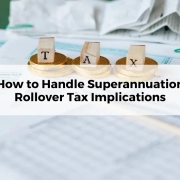How much income do I need in retirement?
Table of Contents
ToggleUnderstanding Your Retirement Income Needs
As you embark on the journey towards retirement, one of the key considerations is determining your retirement income needs. This refers to the estimated amount of income you’ll require to maintain your desired lifestyle after you stop working.
The 80% replacement rate is a common rule of thumb used to estimate retirement income needs. It suggests that you’ll need approximately 80% of your pre-retirement income to maintain a similar standard of living in retirement. This figure is based on the assumption that your expenses will decrease in retirement, as you won’t have to pay for work-related expenses like transportation and childcare.
However, it’s important to note that the 80% replacement rate is just a guideline, and your actual retirement income needs may vary depending on your individual circumstances.
Factors that can influence your retirement income needs
Current lifestyle and expenses
Your current spending habits can provide insights into your potential retirement expenses. Consider your current housing costs, food expenses, transportation, utilities, healthcare, and leisure activities.
Desired retirement lifestyle
Do you envision a more active retirement with travel and hobbies, or a more relaxed lifestyle focused on home-based activities? Your desired retirement lifestyle will significantly impact your income needs.
Age of retirement
The age at which you choose to retire will play a crucial role in determining your retirement income needs. Retiring earlier means having to stretch your savings over a longer period, while retiring later allows for more accumulation time.
Health and longevity expectations
Your overall health and expected lifespan can influence your retirement income needs. Anticipating potential healthcare costs and planning for a longer retirement can help you adjust your savings goals accordingly.
Anticipated sources of income in retirement
In addition to your superannuation savings, you may have additional sources of income in retirement, such as government pensions, part-time work, or rental income. These sources can supplement your superannuation and help you meet your income needs.
Understanding these factors will help you gain a clearer picture of your retirement income needs and allow you to develop a plan to achieve them.
Calculating Your Retirement Income Needs
Once you have a grasp of the factors influencing your retirement income needs, it’s time to start estimating the actual amount you’ll require. Retirement calculators can be valuable tools in this process. These calculators consider various factors like your age, current income, savings, investment returns, and desired retirement lifestyle to provide an estimate of your retirement income needs.
Here’s a step-by-step guide on using a retirement calculator:
Step 1: Gather Necessary Information
Before you start using a retirement calculator, gather the following information:
- Current income: Your current annual income from all sources, including salary, wages, and any other income streams.
- Current expenses: A detailed breakdown of your current annual expenses, including housing, food, transportation, utilities, healthcare, and leisure activities.
- Savings: The current value of your superannuation savings, investments, and any other retirement savings accounts.
- Investment returns: An estimated average annual return on your investments.
- Desired retirement lifestyle: Choose the lifestyle option that best aligns with your desired retirement plans, such as modest, comfortable, or affluent.
Step 2: Input Information into the Calculator
Once you have the necessary information, locate a reputable retirement calculator, such as the one provided by the Association of Superannuation Funds of Australia (ASFA). Input the gathered information into the calculator, ensuring accuracy and consistency.
Step 3: Interpret the Calculator's Output
The calculator will generate an output that provides an estimate of your retirement income needs. This estimate should be considered a starting point and may need to be adjusted based on individual circumstances and changes in financial situations.
Pay particular attention to the following aspects of the calculator’s output:
- Estimated retirement income needs: This figure represents the annual income you’ll need to maintain your desired retirement lifestyle.
- Potential savings gaps: The calculator may identify a gap between your current savings and the estimated retirement income needs. This gap indicates how much additional savings you may need to accumulate.
- Impact of different retirement ages: The calculator may allow you to simulate different retirement ages to understand how adjusting your retirement date affects your income needs and savings goals.
Remember, retirement calculators are not foolproof and should be used in conjunction with professional financial advice to develop a comprehensive retirement plan.
Strategies for Achieving Your Retirement Income Goals
After determining your retirement income needs, it’s crucial to develop a plan to achieve those goals. Here are some effective strategies to consider:
Increase Your Superannuation Contributions
Superannuation is a mandatory savings scheme in Australia that helps you accumulate funds for retirement. Increasing your super contributions can significantly boost your retirement savings. You can make voluntary contributions beyond the minimum employer-mandated contributions.
Invest Wisely in a Diversified Portfolio
Diversifying your investments across different asset classes, such as shares, bonds, and real estate, can help mitigate risk and potentially enhance returns. Consider seeking professional financial advice to develop a personalised investment strategy.
Maximise Tax-Advantaged Retirement Accounts
Australia offers various tax-advantaged retirement accounts, such as Concessional Contributions Cap (CCC) and Spouse Contributions Tax Offset (SCTO), which can help you save for retirement more effectively. Consult with a financial advisor to understand the eligibility criteria and benefits of these accounts.
Seek Professional Financial Advice
Financial advisors can provide personalised guidance and tailored strategies to help you achieve your retirement income goals. They can assess your financial situation, risk tolerance, and retirement aspirations and recommend suitable investment options and savings plans.
Regularly Review and Adjust Your Plan
As your circumstances change, it’s essential to regularly review and adjust your retirement plan. Review your savings progress, investment performance, and retirement income needs periodically to ensure you stay on track.
Remember, achieving your retirement income goals requires discipline, patience, and proactive planning. By implementing these strategies and seeking professional guidance, you can secure a financially comfortable and fulfilling retirement.
Factors to Consider When Estimating Retirement Income Needs
As you navigate the path towards retirement, it’s important to consider various factors that can influence your retirement income needs. These factors can change over time, and regular reassessment of your retirement plan is crucial to ensure you remain on track to meet your financial goals.
Changes in Lifestyle and Expenses
Your retirement lifestyle may not be an exact replica of your current lifestyle. You may spend more time on hobbies, travel, or pursuing new interests, which can increase your expenses. Conversely, you may reduce expenses related to work, such as transportation and childcare. Regularly review your spending habits and adjust your income needs accordingly.
Changes in Income Sources
In addition to superannuation savings, you may have other sources of income in retirement, such as government pensions, part-time work, or rental income. These additional income streams can supplement your superannuation and help you meet your needs. Consider the potential variability of these income sources and factor them into your retirement planning.
Inflation and Cost of Living
Inflation is the rate at which prices for goods and services increase over time. As inflation rises, your purchasing power decreases. This means that the same amount of money will buy less in the future. When estimating retirement income needs, consider the potential impact of inflation on your living expenses.
Healthcare Costs
Healthcare costs can increase significantly in retirement, especially as you age. Anticipating potential healthcare costs, such as private health insurance premiums, medication expenses, and long-term care needs, is crucial for planning your retirement income needs.
Changes in Tax Rates
Tax rates can change over time, and these changes can affect your retirement income needs. Stay informed about potential tax changes and adjust your retirement plan accordingly to ensure you have sufficient after-tax income to meet your needs.
Longevity Expectations
Life expectancy is increasing, and you may have a longer retirement than you initially anticipated. This means your savings will need to last longer. Review your retirement plan regularly and consider adjusting your savings goals to ensure your funds can sustain you throughout your retirement years.
Unexpected Events
Life is full of unexpected events, such as job loss, illness, or market fluctuations. These events can impact your financial situation and retirement income needs. Building an emergency fund and diversifying your investments can help you weather these unexpected events and minimise their impact on your retirement goals.
As you approach retirement, determining your retirement income needs is a crucial step towards securing a financially comfortable and fulfilling post-work life. Understanding the factors that influence your needs, utilising retirement calculators, and implementing effective savings strategies can help you achieve your retirement income goals.
Remember, retirement planning is an ongoing process. Regularly review your plan, consider changes in your circumstances, and seek professional financial advice when needed. With careful planning and proactive action, you can navigate the path to a secure and enjoyable retirement.









